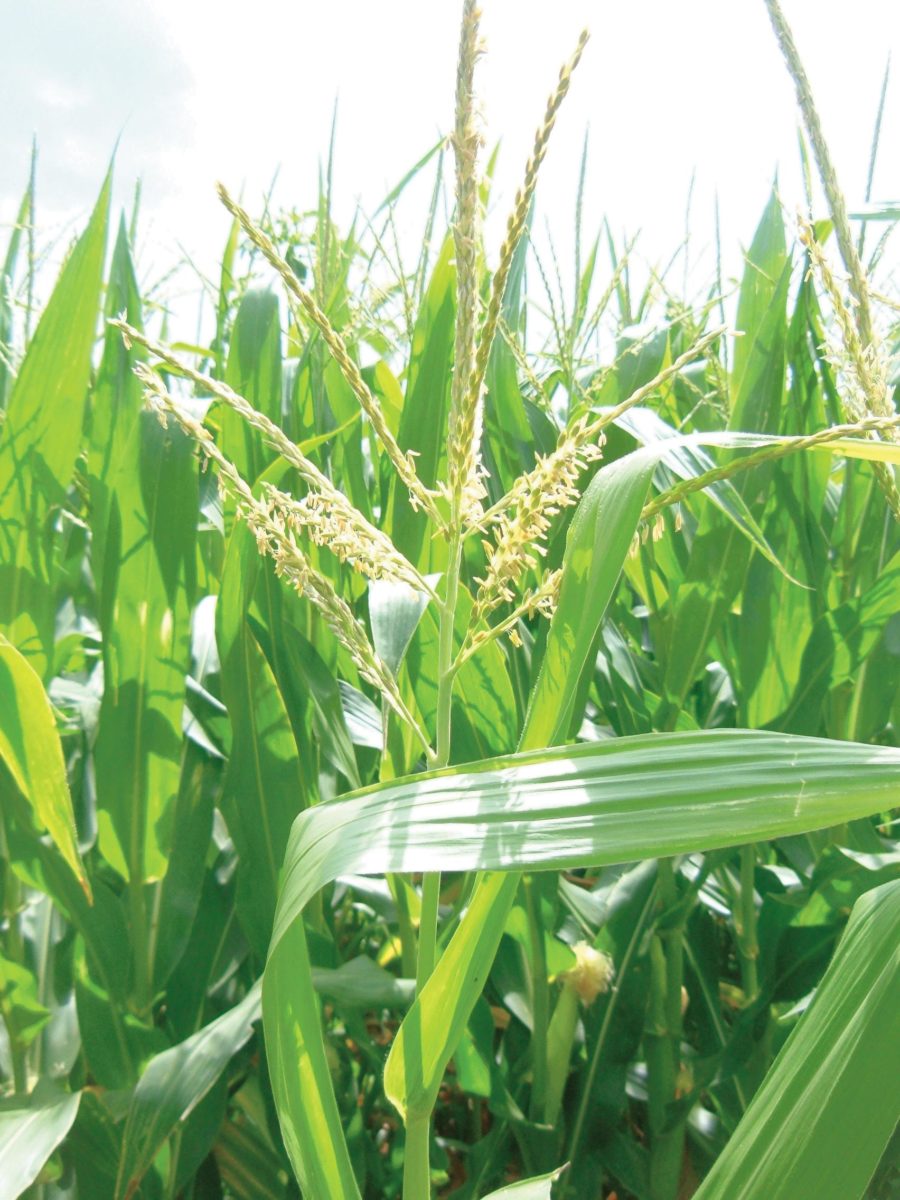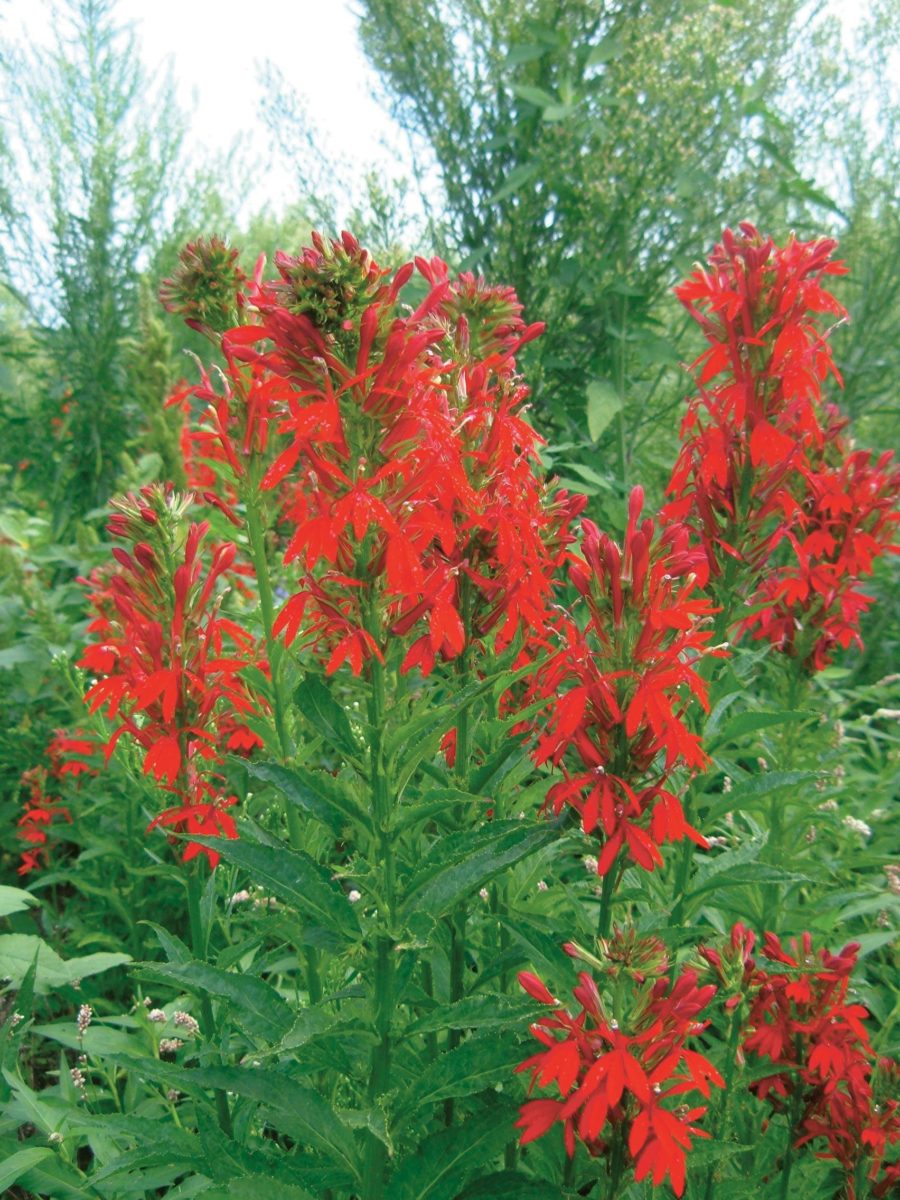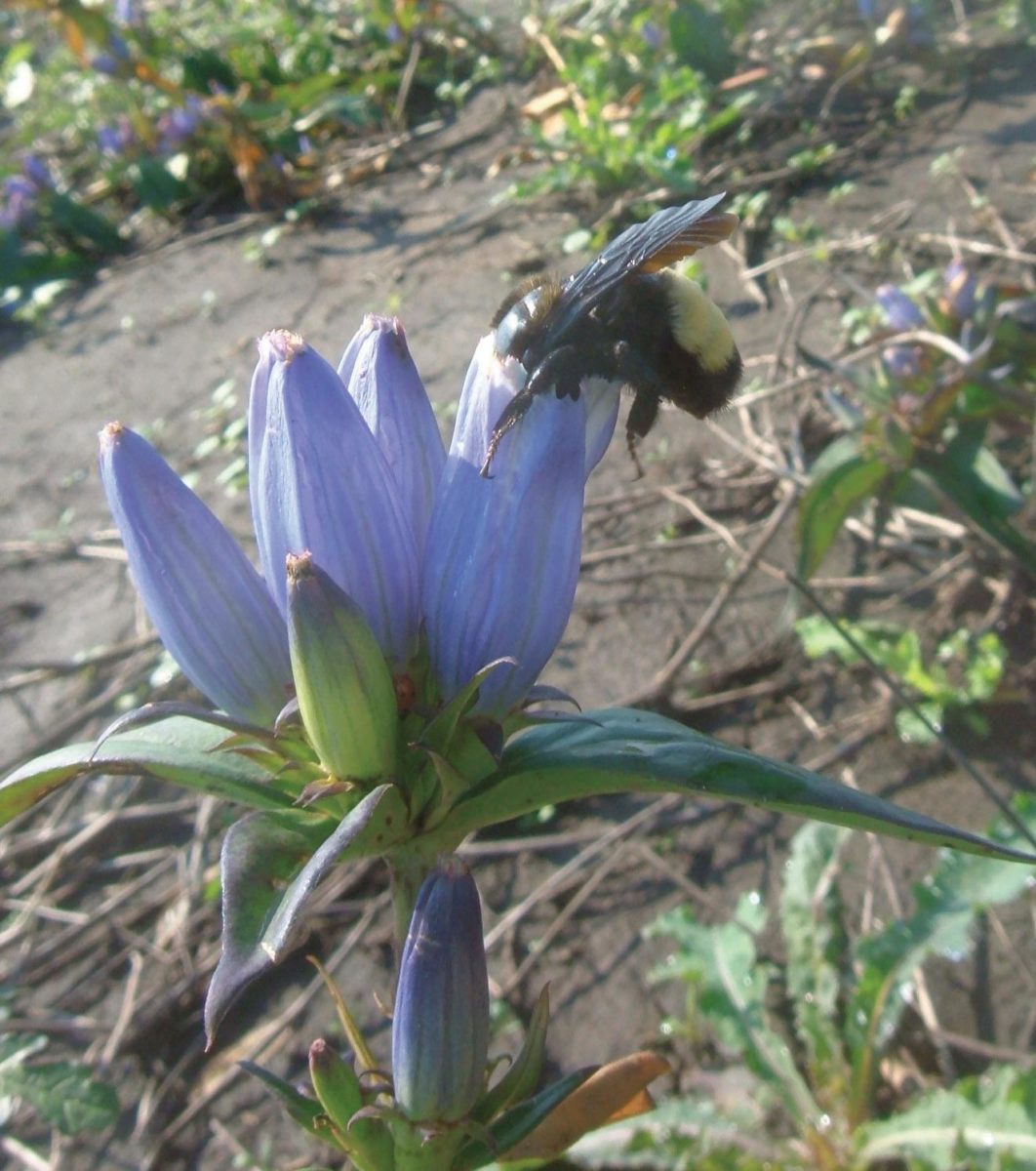
Many of our most common plant species, including grasses, conifers, and food plants such as wheat, rice, and corn (Figure 4.7), are wind pollinated.
Physical movement of pollen via wind, which evolved before insects, requires less energy and results in small, inconspicuous flowers. But wind pollination also has limitations: Most of the copious amounts of pollen produced by these plants does not reach a compatible ovule. Wind speed and direction are unpredictable. Wind-pollinated plants usually need to grow in dense stands of the same species.
Early insects consumed some of this windblown pollen, and over millions of years those insects evolved into the bees and other pollinators that exist today. Plants adapted along with these pollinators, resulting in large showy flowers that are now entirely dependent on animal pollination (Figure 4.8).

The beauty of these flowers does not exist for people, but rather for the creatures that visit them. Flowers are advertising. Colored petals provide contrast against green foliage and offer a landing platform for insects to rest while feeding. Scents, whether pleasant or putrid, attract the chemical sensors of insect antennae. Plants may provide excess pollen (which is high in protein) for insects to eat. To encourage additional visitation, a carbohydrate fuel, nectar, is often provided to power the exhausting flights made by pollinating bees, butterflies, and hummingbirds.
Some flowers provide small droplets of nectar that may be readily available for inefficient pollinators like flies. Flowers that do this, such as fennel, are sometimes called low-reward flowers. High-reward flowers, on the other hand, may provide copious amounts of nectar hidden deep within the inner recesses, where only the largest, most efficient pollinators can reach them.
A classic example of a high-reward flower is bottle gentian (Gentiana andrewsii), a native prairie plant of North America (Figure 4.9). The petals of bottle gentian are closed at the top hiding the reproductive parts within. It attracts large muscular bumble bees which are able to manipulate the petals and push their way inside the flower where they are rewarded with large quantities of nectar.
The color patterns of flowers often provide additional cues to passing insects about the quality and quantity of a flower’s nectar. Many flowers feature ultraviolet nectar guides which are only visible to bees. However the nectar is offered, visitors are forced to brush against anther and stigma to find it.

The result of all this effort is more direct and reliable pollination for the plant without having to rely on the uncertainties of wind. For their part, animal pollinators are often extremely loyal to their host plants during the bloom period. A bee, for example, will often fly from the same species flower to another in succession, ignoring other blooming plants along the way. This loyalty can reach evolutionary extremes where both plant and pollinator become so specialized that each is entirely dependent on the other. This specialization is risky with extinction of the pollinator resulting in the extinction of the plant, and vise versa. The example of bottle gentian mentioned previously is illustrative: in many areas of its range the plant is now rare both due to habitat loss for the plant and the disappearance of its pollinators.
Specialization of this sort is rare, and just as plants and pollinators can become increasingly dependent upon each other, they can also grow apart. In fact some plants have developed emergency back-up plans for survival, such as self-fertility, when insect pollinators are scarce. Thus plants like soybeans, whose flowers have all the classic adaptations of insect pollination, can set seed with nary a bee in sight. In these types of plants the stamen may grow into a long curved arc which eventually contacts its own stigma. Similarly, pollen-hungry bees sometimes forage from a wind-pollinated species like sweet corn.
Just as extreme specialization is the exception, so too are extreme divergences. For even with self-pollinated flowers, seed production is often greater with insect visitation. And while plants like corn may produce vast clouds of pollen, the individual grains are small, low in nutrition, and spoil easily compared to insect-pollinated plants. The general trend for both plant and pollinator is a need for diversity. Animal pollinators need a diverse selection and succession of floral food sources to survive. Plants prosper by adapting to predation, disease, and changing environmental conditions. These adaptations only occur through the genetic diversity inherent in cross-pollination. Without the other, neither plant nor pollinator can exist.
